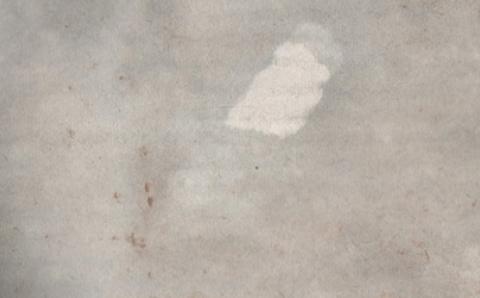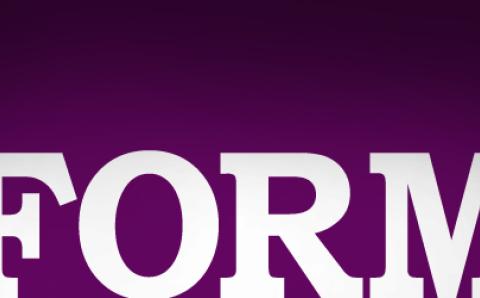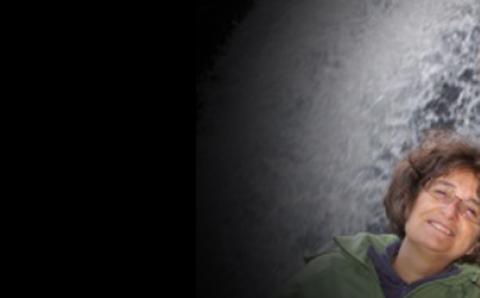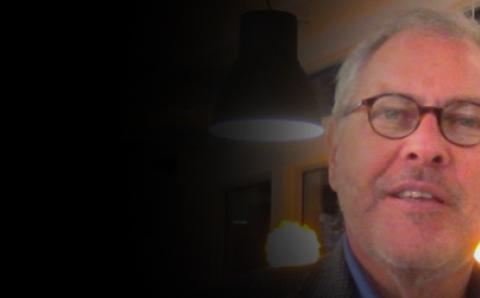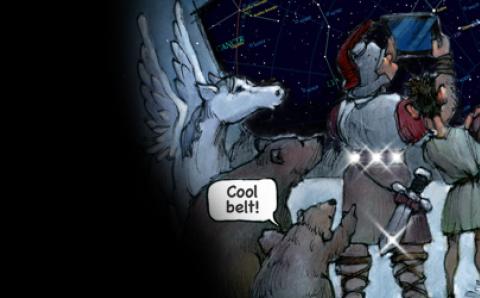A row of mothers holding black-haired babies occupied the front pew of Kildonan Christian Reformed Church. The babies were nestled in cradleboards—Cree-style baby carriers—a surprising sight among the rows of Dutch-Canadian immigrants.
As the pastor began to pray, the women nursed their babies to keep them silent, showing respect for the sacred moment.
After the service, other women from the church approached to coo over the babies and chat with the mothers. Then the women with their babies moved back to a waiting van piloted by Henk deBruyn of the Indian Family Centre. DeBruyn picked the mothers up for church each week and then drove them home.
The year was 1970, and Arie van Eek had recently begun to pastor Kildonan CRC in Winnipeg, Manitoba.
Like many Canadians, van Eek’s contact with Canada’s indigenous people had been limited. During the early days after emigrating from the Netherlands he had worked on a farm alongside an indigenous man, but that was all.
Now he was coming face-to-face with the reality of the challenges facing Canada’s indigenous peoples for the first time, and he was unsettled by it.
“The [indigenous to non-indigenous] ratio is much higher in Winnipeg,” says van Eek. “You see their struggles; it’s more in your face—rotten housing, welfare, drunkenness.”
At that time, the Kildonan CRC was taking turns with other area churches to provide speakers for a local mission’s evangelism nights, where a crowd of mostly indigenous people would sit through a speech in exchange for coffee and a donut.
Van Eek had spoken at these gatherings several times, but something about them unsettled him. This experience was semi-coerced, a one-way street. A vision was growing in him for a more holistic ministry that would meet people in their struggles.
So he began poking around. He worked with the evangelism committees of three Winnipeg Christian Reformed churches to investigate the challenges facing local indigenous people, convinced that there was more to the story than individuals who drank too much. The patterns they witnessed pointed to deeper, more systemic causes.
The group found that many of the indigenous people in Winnipeg at that time were recent arrivals from reservations who were up against unemployment, prejudice in the housing market, police discrimination, and racism.
After more study and discernment, the Council of Christian Reformed Churches in Canada, the precursor to what became the CRCNA’s Canadian Ministries, made van Eek the chair of a committee to seek out someone to direct a new ministry with indigenous people.
Reflecting on the situation more than 40 years later, van Eek muses that his experience in the occupied Netherlands during World War II planted the seeds for his sensitivity to the challenges of marginalized people. “It helped me to be alert to human beings abusing each other,” he says.
The committee found its candidate in Henk deBruyn, who had worked with African-American communities in Detroit. With eyes open to the subtle as well as less-than-subtle manifestations of racism, deBruyn saw discrimination that others often missed.
He also brought a vision for ministry that arose from community goals. His first move was to ask indigenous people in Winnipeg what they would like. In response, the Indian Family Centre was created, beginning with a children’s gathering on Sunday afternoons and soon growing into a ministry of Bible studies, clothing depots, an innovative and successful job skills training program, and cultural celebrations.
The Indian Family Centre cultivated a posture of openness to indigenous culture. At the midweek Bible study, participants sat in a circle and read the Scriptures, echoing the indigenous practice of sacred circles in which everyone has a chance to speak. A “talking stick” was passed around the circle; whoever held the stick had the full attention and respect of the other participants.
“There was peace in the circle,” van Eek says. “No arguing with each other. You only had the right to speak when you had the stick. And when it was your turn to speak, you spoke, but only on the Scriptures, not on what another person had said.”
By the end of the time together, they would have reached a consensus about what the Spirit was saying. Then they would share a meal—borscht and bannock were regular fare.
The movement of the Spirit was so evident in these gatherings, van Eek says, that it got him wondering: What is the role of the Spirit in communities that may never even have heard of Jesus Christ? How does the third person of the Trinity urge and shape communities even before ministry begins?
Eventually he wrote his M.Div. thesis on the topic, discovering that the values of mutual respect, stewardship, and worship of the Creator had been rooted in indigenous communities long before formal ministry had begun.
Before long, the Indian Family Centre’s vision for ministry by, for, and with indigenous peoples had caught on in other places, encouraged by the work of the National Committee for Ministry among Indian and Metis chaired by van Eek.
In 1978, the Indian Metis Christian Fellowship opened its doors in Regina, Saskatchewan, and in 1991 the Edmonton (Alberta) Native Healing Centre was established.
There were challenges along the way. Including indigenous practices like smudge ceremonies, drums, and the peace pipe was contentious and called for discernment. The ministry centres did not dismiss indigenous practices out of hand, but committed to testing the spirits. For example, the Regina centre spent three years in prayerful study before incorporating indigenous smudging into its worship.
This discernment process reached its peak in 2000 with the Cross-Cultural Ministry Forum hosted by The King’s University College in Edmonton. More than 60 participants from all across the denomination gathered to wrestle with the questions that arose from cross-cultural ministry, especially discerning the difference between contextualized ministry and syncretism—the combining of pieces from different religions.
Emotions ran high at several points, but a moment of reconciliation came on the last day of the forum. Ted Charles, a Navajo from Classis Red Mesa, had prayed through the night, searching for a way to model forgiveness and reconciliation. Referring to Jesus’ command in Matthew 5:23 to make peace with our neighbors before offering sacrifices to God, Charles took off his turquoise necklace and gave it to Rene Page, whose ancestry is Choctaw and African American.
The Navajo and Choctaw peoples were traditionally enemies, Charles explained. “Her people have suffered much. I see in her a symbol of discrimination and also a symbol of the reconciliation that I have undertaken here today. And so it is with this gift that I make my commitment to God that reconciliation has filled my heart.”
His example set the tone for the conclusion of the forum. While agreeing that syncretism is a danger, participants took part in an indigenous smudge ceremony. “I’ve never felt the Spirit so powerfully as during this event,” said Peter Noteboom, the forum facilitator.
Smudging Ceremony
Ojibway leader Leo Beaulieu describes the role of the smudging ceremony in opening the circle as a sacred space, helping worshipers to connect with the Spirit. Smudging also serves as a symbol of cleansing, said another Indigenous Forum participant. “In the time before we start any work, we cleanse ourselves and invite honesty, kindness, love and sharing into the circle—all special gifts that come from the Spirit. The circle is so sacred, so beautiful, that we don’t want to bring anything negative into it. What troubles us or blocks us—we let go of those things.”
—excerpt from “Hearts Exchanged” (report on the Ministry Forum)
Indigenous people also led the way when the CRC’s Centre for Public Dialogue made indigenous justice one of its key priorities. Some of the seeds had been planted in the Philippines years before, when Terry LeBlanc, a well-known indigenous theologian in North America, met Rev. Bruce Adema, who was then working as a seminary professor with Christian Reformed World Missions.
When Adema later served as the director of Canadian Ministries, LeBlanc agreed to help the Centre for Public Dialogue discern how to take the next step in engaging with indigenous peoples.
LeBlanc didn’t pull any punches. When he was questioning CRC justice leaders in 2008 about their reasons for focusing on the concerns of indigenous people, one of the leaders expressed a desire to be “a voice for the voiceless.” LeBlanc responded: “We’re not voiceless; you’re deaf.”
Mike Hogeterp, the director of the Centre for Public Dialogue, says that he has learned a lot by listening to indigenous friends and colleagues.
“I have had the honor of being stretched and challenged by indigenous leaders who are now friends and mentors,” Hogeterp says. “They have taught us that reconciliation is a shared journey of mutual respect and responsibility and a celebration of the gifts that indigenous people bring to our lives as Canadians and Christians.
“I'm deeply thankful for the rich and active spiritual journey that this is.”
Paying attention to indigenous perspectives brought Hogeterp and other Canadian justice team members, including new member Shannon Perez, to Vancouver last September to participate in the Truth and Reconciliation Commission (TRC).
The Truth and Reconciliation Commission was set up by indigenous peoples in Canada as a way to tell their stories about how they had been affected by the experience of church-run residential schools and to educate Canadians about this little-known part of their history.
Learn more about the Truth and Reconciliation Commission and what the CRC is doing.
The experience brought team members face-to-face with the heart-wrenching stories of children who had been removed from their families and sent away to residential schools. A former Canadian minister of Aboriginal Affairs and Northern Development said these schools were meant to “kill the Indian in the child.”
“Just the retelling of the horrors those children went through in agonizing detail is more than I could carry alone,” said Marie Vogel, a communications staff member with the CRC’s Office of Social Justice. “I have no idea how each survivor manages to carry those wounds and keep getting up in the morning.”
Harold Roscher, director of the Edmonton Native Healing Centre and a Cree, said: “As a body of believers in Jesus, we are called to love one another and help one another, so the TRC hearings in Canada provide a natural starting point for a chance to listen and hear each other’s stories.
“I need to be able to tell [my indigenous brothers and sisters] that Christians are ready to listen so that the light of our Creator will shine upon us all.”
—Danielle Rowaan is the CRC’s Justice Communication and Education coordinator.
'God was looking out for me'
For Shannon Perez, the experience of meeting with the Truth and Reconciliation Commission was especially personal. Perez is a member of the Sayisi Dene First Nation and had just begun working as a justice and reconciliation mobilizer with the Christian Reformed Church when the team went to Vancouver.
Some of her mother’s older siblings had been in residential schools, and her family was part of an influx of indigenous people into Winnipeg in the 1970s. Her friendship with Michele Visser-Wikkerink at the Indian Family Centre led her to the work as a mobilizer in the CRC.
Perez started attending Good News Fellowship Church’s youth group as a teenager after she was invited by a friend. Although she had no prior contact with the church, she says she felt welcome because many of the other young people there also had complicated home lives and because of a mentoring relationship she developed with Visser-Wikkerink, one of the youth leaders.
Visser-Wikkerink often picked Perez up from school to take her out for lunch. Although Perez later drifted away from the church, she returned after her children were born because “knowing Michele went to this church made me confident that I could trust my children to their nursery and that they would be safe.”
Eventually Perez, who had a degree in indigenous studies, joined both the board of the Indian Family Centre, of which Visser-Wikkerink was then director, and the Canadian Aboriginal Ministry Committee, which provides lay leadership to the CRC’s work with indigenous peoples and organized the reForming Relationships Art Tour.
“What I love about the Canadian Aboriginal Ministry Committee is that we’re able to talk about Christianity and aboriginal people in a positive atmosphere,” Perez says. “Instead of being at odds with each other, we can work together.”
Just before beginning her work with the Aboriginal Ministry Committee, Perez fell seriously ill for several months; Visser-Wikkerink organized the church to provide home-cooked meals for the family.
“At one point I was all alone at home and in despair when Michele phoned me and said that she had organized meals for my family during this time,” Perez says. “What a blessing! I was more hopeful (and humbled) after that. God was looking out for me.”
Hogeterp says that Perez has been a valuable addition to the CRC’s indigenous ministries. “Shannon Perez has been a gentle presence in our national dialogue on reconciliation and justice as a volunteer. After only a few months in a staff chair, her insightful questions and challenges to our team and networks are providing a beautiful new dynamic to the journey. It’s an honor to work with Shannon.”
—Danielle Rowaan
About the Author
Danielle Rowaan is the CRC’s Justice Communication and Education coordinator.


